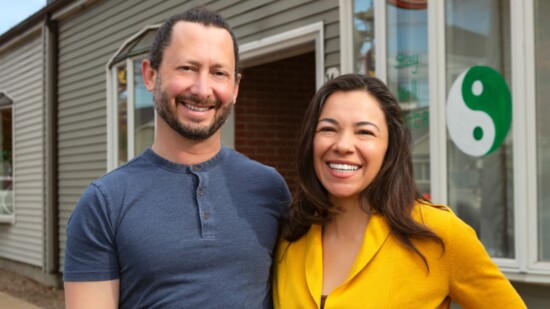“Every person is a mystery to be investigated,” say Marielle Ceresa and Andrew Clark, partner owners and practitioners at Upright Acupuncture and Wellness in Dover. Certified and licensed in acupuncture and Chinese medicine, Ceresa and Clark are master detectives—tenaciously seeking out clues to heal ailments and attain balance and health throughout the body. “What each person experiences every day provides information about how well all the body’s systems are working and whether they are working in balance and harmony,” they explain.
Advances in Western medicine are remarkably effective in providing critical care, responding to trauma, and extending life. But too often, these approaches focus on mitigating symptoms rather than on promoting overall wellness. Ceresa and Clark provide an example: Many people suffer frequent headaches. They are all advised to take pain relievers—which are important and often necessary. However, each person’s headache may stem from different causes in the body. Without addressing the root cause, there’s no chance to actually heal—rather than simply medicate—the symptom.
In contrast, Chinese medicine is based on the truest definition of holism: Each part of the mind and body (or physiological system) relates to every other part—and the body as a whole. One system holds a possible key to treat every other. So, a “dysfunctional symptom”—such as persistent pain, digestive problem, or sleep disturbance—is a sign that one or more parts are functioning poorly or are out of balance. When a patient presents with multiple symptoms, Chinese medicine studies those symptoms to discover the underlying pattern of disharmony—rather than treating each symptom separately.
Treatment begins with a thorough intake appointment that lasts about an hour and a half. Walking into the Upright clinic for the first time, patients enjoy a sense of openness and calm—airy, uncluttered spaces, nature photographs on the walls, and a feeling of welcome.
The intake session at Upright has three parts:
- In-depth questions about the chief complaint
- In-depth questions about “everything else”—uncovering hints about your chief complaint by covering every system of the body (digestion, breathing, etc.)
- Observation of other physiological clues, including the abdomen, pulse, tongue, gait, vision, complexion, and temperature of the limbs and extremities
Following the comprehensive patient evaluation, the practitioner considers: How do the things we’re noticing contribute to the primary symptom? How can we change the dynamic to provide relief? According to Ceresa and Clark, practitioners create individualized treatment plans based on the four pillars of Chinese medicine:
- Acupuncture
- Herbal medicine
- Bodywork/massage
- QiGong (a system of coordinated body posture and movement, breathing, and meditation)
Acupuncture was known in Britain, Europe, and the U.S. in the 19th century but didn’t take root here until the mid-20th century. Today, its effectiveness is widely recognized—even by the National Institutes of Health.
Because of acupuncture’s success in mitigating the side effects of chemotherapy and radiation treatments, many oncology centers now include acupuncture practices. Acupuncture and Chinese medicine are also especially effective in addressing women’s health, using individualized evaluation and treatment to alleviate difficulties with menstrual health, fertility and infertility, high-risk pregnancy, perimenopause, and menopause.
Whatever the presenting complaint, each person’s plan usually includes acupuncture and one or more other approaches. Often, an herbal formula—taken as a tea or pill—can also be used between sessions or exclusively, significantly reducing the cost of treatment. Many patients delightedly report that when their primary symptoms subside, they notice improvements in other areas—because their body’s systems are regaining balance and functioning better overall.
Although acupuncture and Chinese medicine are gaining wide recognition, most Americans haven’t tried them. But you don’t see promotions for these valuable treatments on television or social media. Why not? “We don’t need to persuade skeptics,” say Ceresa and Clark. “The treatment speaks for itself.”
